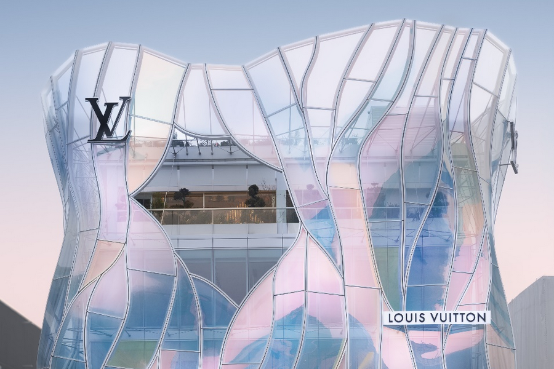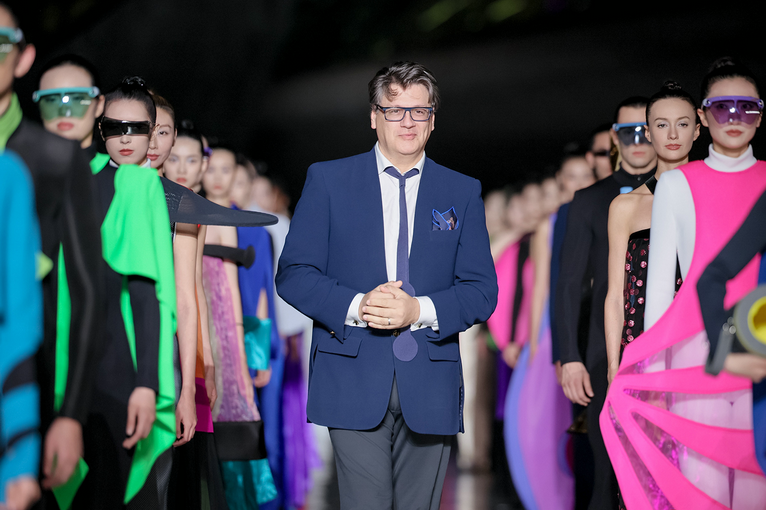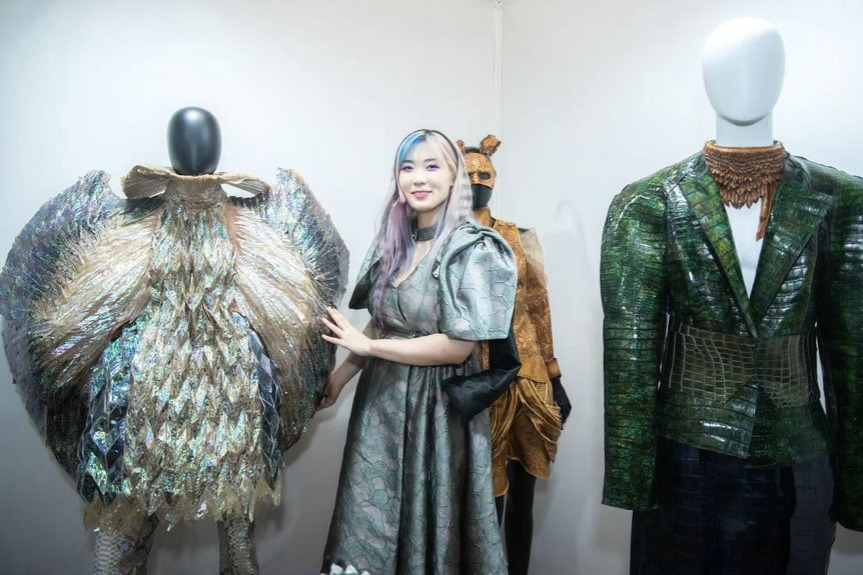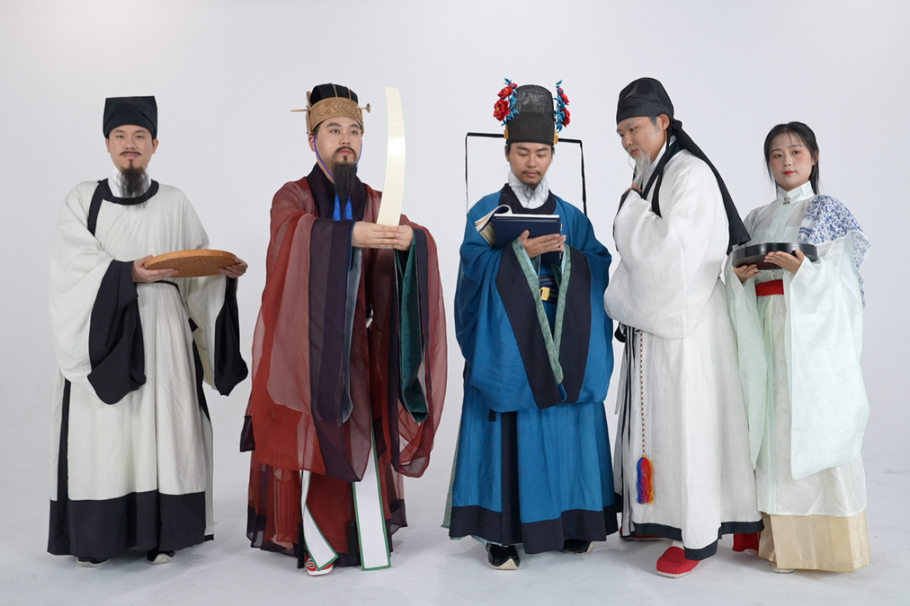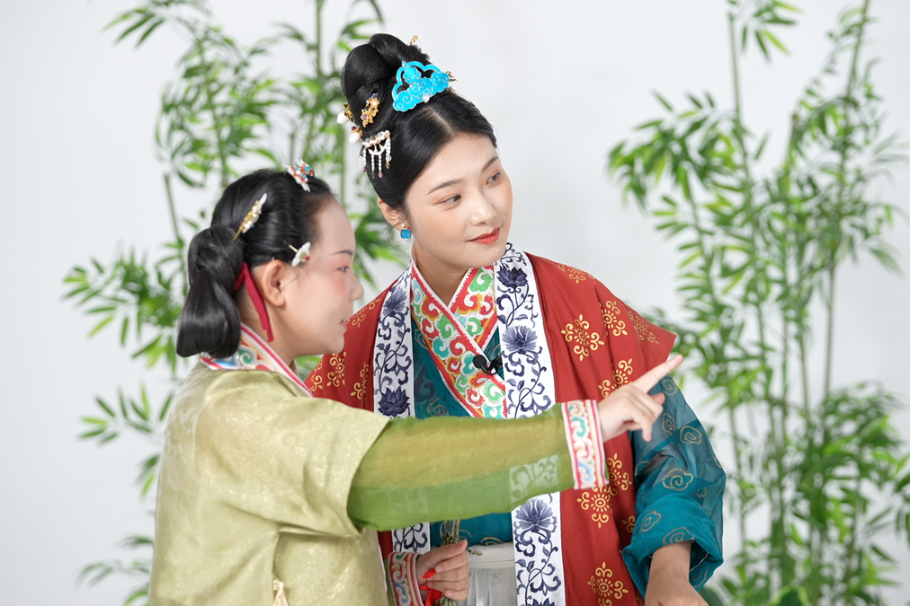Museum's fashion brand weaves traditional modernity


For Qi, the collection's "functional aesthetic" was as important as its cultural resonance. "Clothing isn't just an adornment," he reflects. "It's an everyday armor. We hope wearers will draw a quiet strength from these designs, whether they're stepping into a meeting or out for a stroll."
While Qi's designs reflect practicality and subtle cultural cues, Lawrence Xu's conceptual creations offer a bold, poetic counterpoint.
As the lights dimmed and flared again, Xu's 37 statement pieces unfolded like a scroll painting.
His series traced the palace's gardens through the four seasons. The first pieces bloomed with embroidered wisteria in soft lavenders, echoing the cascading vines of spring; midsummer's lotus ponds shimmered across flowing skirts in ink-black and gold, their surfaces dotted with crystal beads like dewdrops; autumn arrived in a riot of begonia motifs rendered in warm, earthy tones; and winter settled in with bamboo patterns etched onto silks that swayed like leaves in a cool breeze.
These statement pieces weave stories into fabric, Xu explains.
"They aren't inventions, but timeless storytelling pieces that have always existed. We're simply finding ways for them to resonate in the present," he says.
According to Zhao Juan, the general manager of the company for cultural development at the museum, the brand plans seasonal releases and designer collaborations to maintain its innovative edge while staying true to its cultural roots.
The museum's managing team emphasizes that the Kung Fashion initiative aims to infuse heritage into the rhythms of daily life through creative reinterpretation.
"We want to create a platform where cultural heritage comes alive — something people can see, touch, and experience," says Liu Shiyuan, director of the operations and management department with the museum.

















